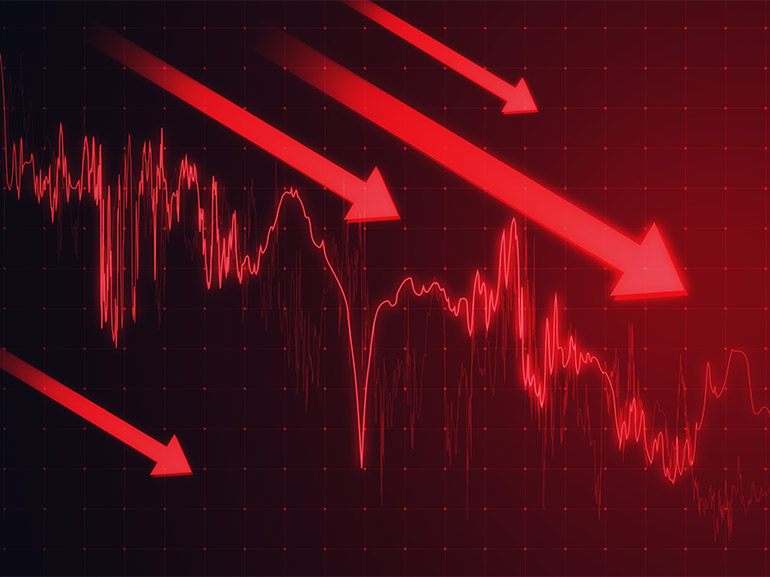When Will the Stock Market Crash Next?

Imagine the stock market as a rollercoaster. You've had a thrilling ride, the wind in your hair, the adrenaline pumping. But suddenly, the track dips sharply, and you're left wondering, "When will the next big drop come?" This is the question on every investor's mind: when will the stock market crash next? Understanding the signs and preparing for an economic downturn can help you navigate the tumultuous waters of stock market volatility and safeguard your investments.
Understanding Stock Market Volatility
Stock market volatility is a natural part of investing. It's like the weather—sometimes sunny, sometimes stormy. But how do you predict when a storm is coming? By paying attention to the signs. Market indicators, such as the Volatility Index (VIX), can give you a sense of the market's mood. Think of the VIX as a weather vane; it doesn't tell you exactly when a storm will hit, but it gives you an idea of the direction the wind is blowing.
Key Market Indicators to Watch
To protect your investments, keep an eye on several key market indicators:
- Economic Indicators: Look at GDP growth, unemployment rates, and inflation. These are the vital signs of the economy. If they start to falter, it might be a sign of an impending economic downturn.
- Corporate Earnings: Companies' earnings reports can provide insights into their financial health. If earnings are consistently declining, it could signal trouble ahead.
- Market Sentiment: Investor sentiment can be gauged through surveys and market sentiment indices. High levels of pessimism can sometimes precede a market crash.
- Technical Indicators: Tools like moving averages, relative strength index (RSI), and Bollinger Bands can help you spot trends and potential reversals in the market.
Preparing for an Economic Downturn
So, you've spotted the signs. What next? It's time to focus on investment protection. Think of it like preparing for a hurricane. You don't wait until the storm is at your doorstep; you board up the windows and stock up on supplies beforehand.
Diversification: Your Safety Net
Diversification is your best friend in times of uncertainty. Spread your investments across different asset classes, sectors, and geographies. This way, if one area takes a hit, others might hold steady or even thrive. It's like having a diversified portfolio of umbrellas—if one breaks, you've got others to fall back on.
Emergency Fund: Your Financial Lifeline
An emergency fund is crucial. Aim to save at least 3-6 months' worth of living expenses. This fund can keep you afloat during tough times and prevent you from having to sell investments at a loss. Think of it as your financial lifeboat, ready to keep you afloat when the market gets choppy.
Financial Planning for Uncertain Times
Financial planning is not just about making money; it's about keeping it. In uncertain times, it's essential to have a solid plan. Review your investment strategy regularly and adjust as needed. Stay informed about market trends and economic forecasts. Remember, knowledge is power, and in the world of investing, it can be the difference between weathering the storm and being swept away.
Consulting a Financial Advisor
Consider consulting a financial advisor. They can provide personalized advice tailored to your unique situation. Think of them as your financial navigator, guiding you through the stormy seas of the market. They can help you understand complex financial concepts and make informed decisions. For more insights, you can visit the Investopedia for comprehensive financial education.
Staying Informed and Adaptable
Staying informed is key. Read financial news, attend webinars, and follow reputable financial blogs. The more you know, the better equipped you'll be to handle market fluctuations. Adaptability is also crucial. Be ready to pivot your strategy if the market conditions change. Flexibility can be your greatest asset in times of uncertainty.
Conclusion
Predicting the exact timing of a stock market crash is impossible, but understanding the signs and preparing for it can make all the difference. Keep an eye on market indicators, diversify your investments, and maintain an emergency fund. Stay informed and adaptable, and don't hesitate to seek professional advice. Remember, the market is like the weather—it changes, but with the right preparation, you can weather any storm.
So, are you ready to face the next market downturn with confidence? Start by assessing your current financial plan and making the necessary adjustments. Your future self will thank you.
FAQs
1. What are the most reliable indicators of an impending stock market crash?
Reliable indicators include economic indicators like GDP growth and unemployment rates, corporate earnings reports, market sentiment indices, and technical indicators such as moving averages and RSI.
2. How can I protect my investments during a market downturn?
Diversify your portfolio, maintain an emergency fund, and stay informed about market trends. Consulting a financial advisor can also provide personalized strategies for investment protection.
3. What role does diversification play in financial planning?
Diversification spreads risk across different asset classes, sectors, and geographies, reducing the impact of a downturn in any single area. It's a crucial strategy for long-term financial planning.
4. Why is an emergency fund important?
An emergency fund provides a financial safety net during tough times, preventing you from having to sell investments at a loss. It's essential for maintaining financial stability.
5. How often should I review my investment strategy?
Regularly reviewing your investment strategy, at least annually, ensures it aligns with your financial goals and adapts to changing market conditions. Staying informed and adaptable is key to successful financial planning.
```
Belum ada Komentar untuk " When Will the Stock Market Crash Next?"
Posting Komentar